Meeting the Legend: The DeLorean DMC-12
It couldn’t hit 88mph but it’ll always be a star
By Imthishan Giado
Tell me you can look at this DeLorean live, in the flesh and not feel something stir deep within your soul. Tell me that, and I’ll call you a liar to your face because the DeLorean is quite simply one of the most awesome cars ever made. It is rolling proof that a car can be more than the sum of its mediocre parts.
Like so many people before me, the DeLorean is forever tied to its iconic appearance in Back to the Future. At the time, I thought it was some sort of one-off kit car that they had made just for the movie, or a forgotten showcar that had been retrofitted for the part like Charlie Sheen’s Mopar in The Wraith.
It wasn’t until the mid-1990s when the UAE finally emerged on the World Wide Web that I realised that the DeLorean was an actual car that you could buy with actual money. Granted, you could only have bought it between 1981 and 1982, so I would only have been two years old and not really in the possession of the fund necessary. Which, by the way, in 1980s money was quite a bit: $25,000, or $57,500 in today’s currency. Back then, spending a few thousand dollars more would have netted you a Ferrari 308 or a Porsche 928, so you can kinda see the scale of problem John DeLorean was up against in trying to sell this new, untested brand to the public at large.
The story of John Zachary DeLorean could practically fill up a whole article all by itself. It will suffice to say that the man who created the first accepted muscle car by stuffing a great big engine in a compact car resulting in the Pontiac GTO, was a very interesting fellow indeed. An engineer by trade but a dreamer at heart, after a short spell at crosstown rivals Chrysler, he enjoyed a much-lauded career at GM, during which the handsome, flamboyant DeLorean was as much as an attraction as the cars he helped create. The first ‘rock-star auto exec’, think of the cult of personality surrounding maverick veteran pilot and tough guy Bob Lutz today and you’ll get a good idea of how DeLorean was received by the industry. An enfant terrible, to be sure, but you can’t argue with the man who created the muscle car craze that swept America in the late ’60s and early ’70s, and at the age of 40, became the youngest vice president and division head in GM history.
By 1973, the brash young DeLorean had the world at his feet, could have created any automobile he wanted, with the limitless engineering talent of the world’s biggest car company at his disposal.
And then, in 1973, he decided to leave GM.
Like I said, John DeLorean the man is almost more interesting than his car. Reportedly, he was highly disillusioned with the archaic, formal working practices at GM. Chafing at the bit, he decided that he could create his own car, and create a better car company in the process. What happened next was a very rapid series of events, a period in which things went very well for DeLorean, and then went very, very bad.
Before we talk about the car, let’s pause briefly to consider the company. By 1975, DeLorean formally founded his company in Detroit, Michigan – but that wasn’t where he planned to build his cars, oh no. Despite significant funding from a number of sources including celebrity friends Johnny Carson and Sammy Davis Jr, he was still looking for a place to build his car in an area with cheap labour and high unemployment where a government could be persuaded to help fund the considerable startup costs of setting up a new manufacturing facility.
The result? The DeLorean DMC-12 sports car (or simply DeLorean as it would later be known) would be built in the unlikely locale of Dunmurry, Ireland, thanks to generous grants from both the Republic of Ireland and the UK. The 61,000 square metre facility was just miles from the centre of Belfast, best known then as a hub of terrorist activity in the country’s long-ongoing ‘Troubles’. Keen to change the international image of Ireland, the Thatcher-led British government threw its weight heavily behind the project as a PR initiative as well as providing local employment.
There were only two problems: Irish workers had never put a car together before, and second and more importantly, the DMC-12 was nowhere near ready for production.
The first prototype was shown in October 1976, a stunning vision in stainless steel by Giorgetto Giugiaro of Ital Design fame who also designed the Alfasud and VW Golf to name just a tiny few of his landmark designs. From the onset the look was perfect, a celebration of ’70s wedge-styling married to the flamboyance of gullwing doors. Enough ink has been spilled over the last three decades that I won’t waste any further time except to say that the DeLorean looked very, very good indeed.
But under the skin, trouble was brewing.
For starters, the DeLorean had no engine. John’s first choice was a Wankel motor as found in the contemporary NSU Ro 80. When that engine manufacturer went bust shortly afterwards, DeLorean looked at Ford’s Cologne V6 and eventually settled on the new and largely untested 2.8-litre Peugeot-Renault-Volvo (PRV) V6 mounted at the rear of the car.
It would prove to be a disastrous choice. European models only made 150bhp (or the output of a Ford Focus today) and performance was tepid at best. But worse was yet to come. Strict US emissions regulations meant that the DMC-12 had to be fitted with catalytic converters which strangled performance even further to a life-sapping 130bhp; for reference, a 1.8-litre Honda Civic today makes 8bhp more. The DMC brochure promised 0-60mph sprint in 8.8 seconds but real world performance was nowhere near that, with Road and Track recording a best of 10.5 seconds.
Then there was the rest of the car which was an absolute mess. The ’76 showcar had to be completely re-engineered for production, a hugely time consuming and expensive process. After bleeding development dollars for years, DeLorean purportedly turned the whole thing to Colin Chapman, a man who you might know from a little company from Lotus. The boys from Hethel set to work and essentially discarded everything that DeLorean had done up to that point with the exception of that perfect body and the gullwing doors.
Well, not quite everything. At 6 feet and 4 inches, DeLorean insisted on building a car that could comfortably hold his lanky frame. The upshot is a cabin that remains remarkably spacious and comfortable for an exotic even today.
You’d think Lotus would do a fine job of engineering an automobile, if not necessarily a reliable one. And deliver they did, with the final DMC-12 being a relatively slow but fine handling car with excellent ride quality (partly due to the tall 15″ wheels). But that’s partly because the entire car is essentially a Lotus Esprit underneath the skin, based on a similar double-wishbone front and multilink rear setup. Oh come on, even Colin Chapman must have copied something at least once in his life, right?
And given the reported friction between Lotus and the DeLorean over the time the car was taking to get to production, it wasn’t a surprise that Chapman decided to re-use a design he was already familiar with. For his part, rather than attending to his nascent – and ailing – car company by all accounts DeLorean continued to spend time jet setting the world and raising yet more funds to keep his dream afloat. He should have been figuring out ways to make the car more cheaply because by the time it launched in early 1981, the writing was already on the wall.
People loved the look of the DeLorean but the stainless steel coupe was too slow, too expensive and riddled with build quality problems right from the onset. A $10,000 cheaper Corvette would absolutely blow the gullwing doors off the DMC-12 from a stop light, making it a tough sell in the performance-minded States. Oh yes, those gorgeous Art Deco doors. They were simply too heavy, loaded down with heavy kit like electric windows, so the gas struts holding them up were apt to fail, meaning owners were trapped in their cars. And what happened if the car rolled over? Not even Peter Dinklage could escape through the tiny window opening.
Here’s another fun fact for you: remember how in Back to the Future, the car had to hit 88mph to travel through time? In real life, the DMC-12 was nowhere near capable of that kind of velocity, as evidenced by the speedo above. With that puny PRV V6 whining away, it would barely do 80mph, so the third film’s conclusion with the car being pushed by a steam train is kind of apt, really.
Initial sales were poor, to say the least. DeLorean had planned to sell up to 30,000 coupes a year but in 1981 shifted just 6,000 cars. In ’82, with the clouds of uncertainty surrounding the company, sales dipped even further. All in all – and even this is a highly-disputed figure – only 9,000 cars ever left the Belfast factory, of which a shade of 6,000 are still on the roads today.
DeLorean did his damnedest to save the ailing firm, but it was a Herculean feat beyond even his considerable powers of PR. The British government had begun to ask questions about where more than $100 million of its money had gone and refused to provide any more funding until he could raise equal amounts of money from outside investors. Desperate to create more capital, what John DeLorean did next will forever remain a source of controversy.
Bizarrely he had decided to turn to drug trafficking as a source of income. Even at this, the luckless DeLorean failed, as the people he attempted to sell $24 million worth of cocaine to turned out to be the FBI in a massive sting operation. Slippery as ever, he managed to escape jailtime by successfully accusing the US Government of entrapment – not the Catherine Zeta Jones kind but the kind where someone offers you a very large bag of money to do something highly illegal.
The damage done to the reputation former golden boy of Detroit, however, was terminal. The DeLorean Motor Company was dead, and John DeLorean would spend the next two decades in courts fighting to clear his name before dying of a stroke in 2005. Bankrupt and hated by both the British for costing them hundreds of millions of dollars and the Irish for thousands of jobs, DeLorean deserved to be perhaps no more than a footnote in automotive history.
Well, there is the small matter of the amazing car that he built. The car is still an absolute design icon, recognisable to millions all over the world because of its star turn in those films. But even if it was never driven by Marty McFly, this car, like its kooky creator, was always destined for stardom.
Tariq Sheikh’s DMC-12, the car you seen in pictures throughout this article, is a near-perfect example with less than 5,000 miles on the clock and is as close to a new DeLorean as you’re going to get in the Middle East. It might well also be the only one in the actual region and certainly the only one in running condition. Yes, it’s not particularly fast – that damned PRV engine – and no, it’s not easy to maintain at all with that impossible-to-wax stainless steel body. But by modern standards, it’s actually quite practical with a big boot under that nose in the front, while the interior is far more spacious than the other gull-winged car of our times, the Mercedes SLS.
Though he is long gone, DeLorean’s sports car dream is alive and well today thanks to the efforts of thousands of enthusiasts across the world. Did I say the DMC12 is hard to maintain? I kinda lied. Expecting huge orders from the US market, the DMC company pumped out thousands of every kind part needed to keep a car on the road. Today, that entire giant inventory belongs to a company in Humble, Texas called yes, the DeLorean Motor Company although it’s no relation to the original. They can supply you every single bit you need – in fact, there’ s so much stock on hand that they’re building entire new cars which you can buy, although at $57,500 a new-old DMC-12 isn’t cheap. Fortunately, with the passage of time you can get upgrades for everything. The wheezy PRV engine can now output 200bhp like its creator intended, suspension upgrades can improve the handling, even that pesky door has improved struts now available.
Turns out, you can teach a British engineered, Irish-built American dog with a French-Swedish heart some new tricks.
They say you should never meet your heroes; you’ll only be disappointed. Well, I spent all day with a real deal DeLorean, a car I’ve been wanting to touch and feel in the flesh for more than 20 years; and I can safely say, they’re totally wrong.
Many thanks to Tariq Sheikh for providing us his immaculate DMC-12.

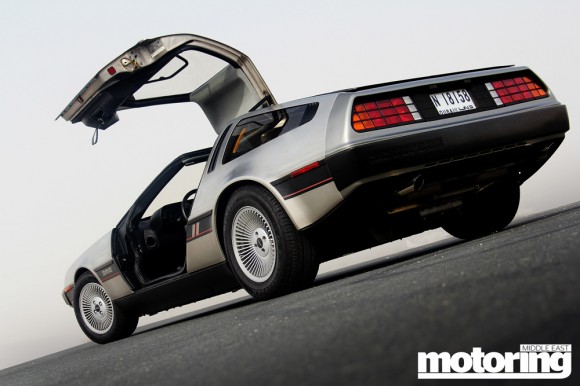
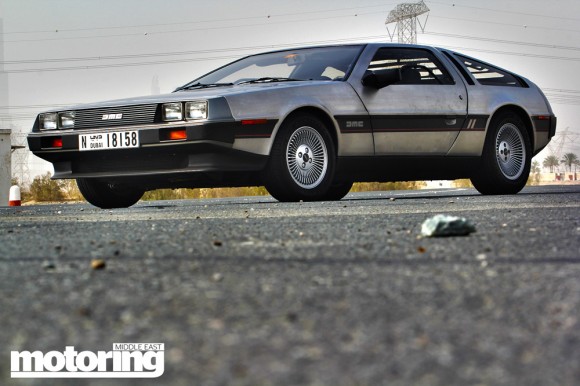
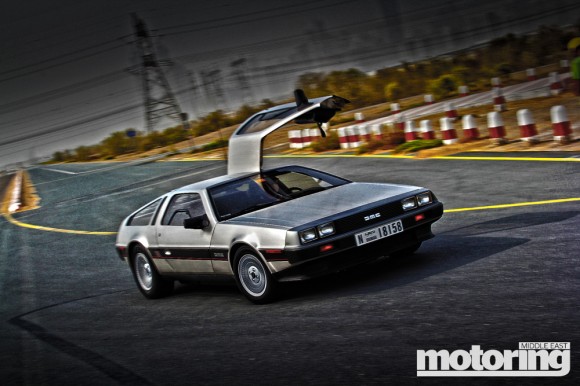
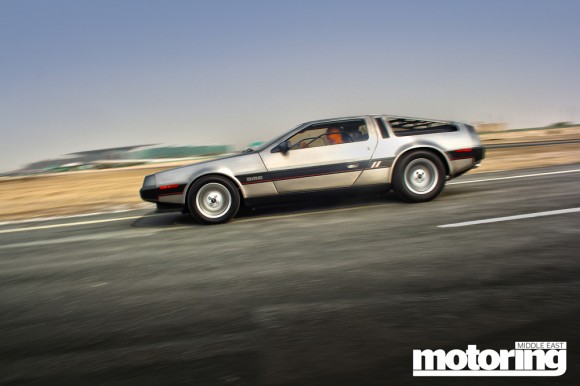
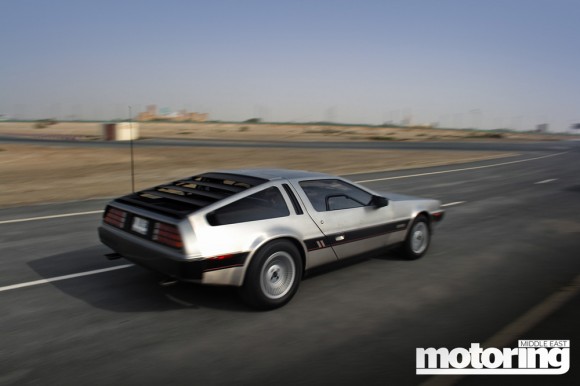
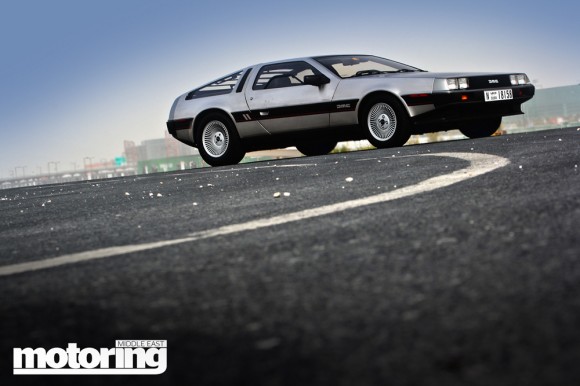
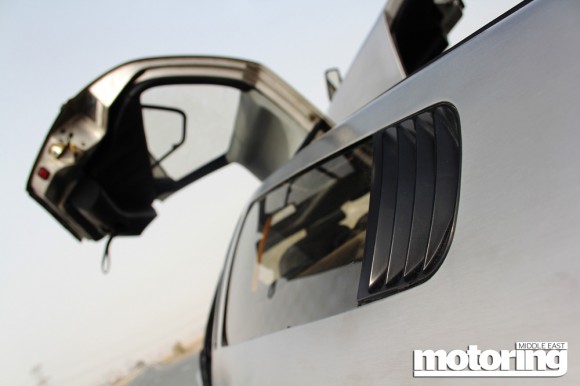
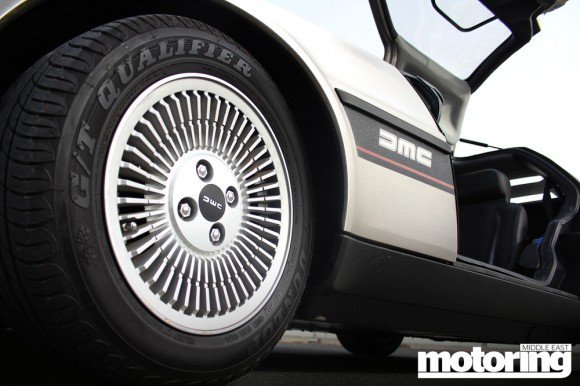
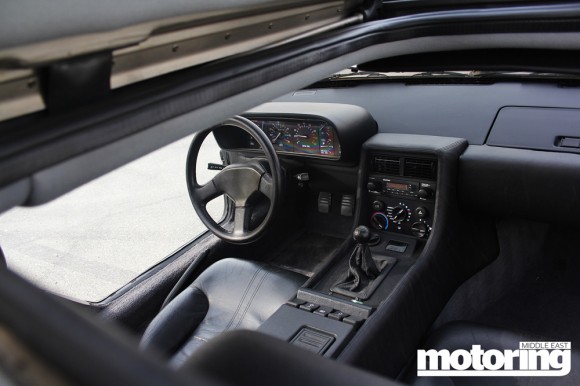
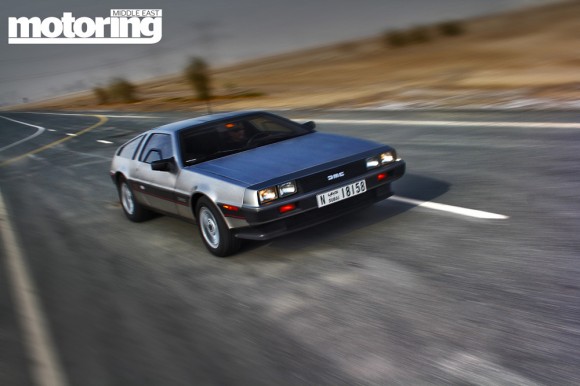
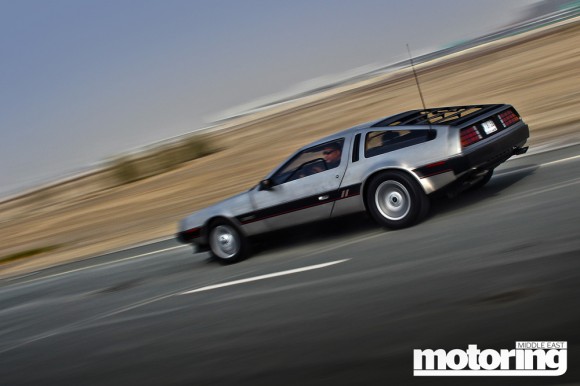
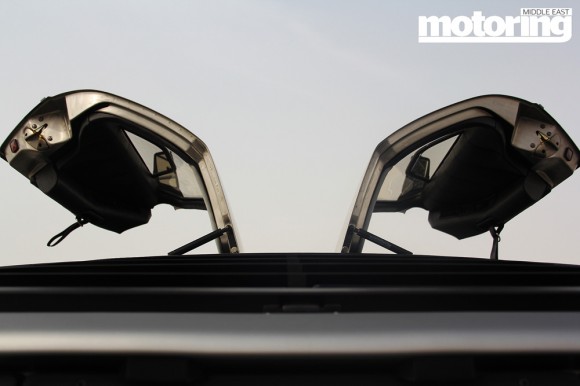
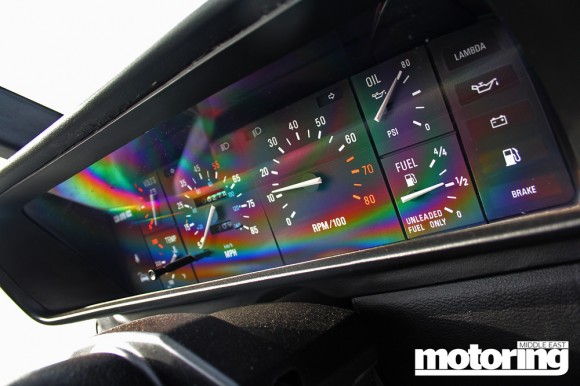
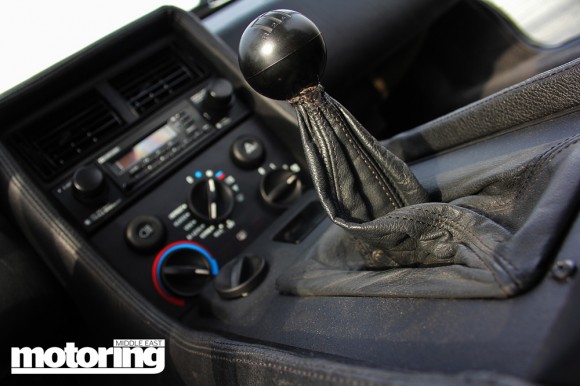
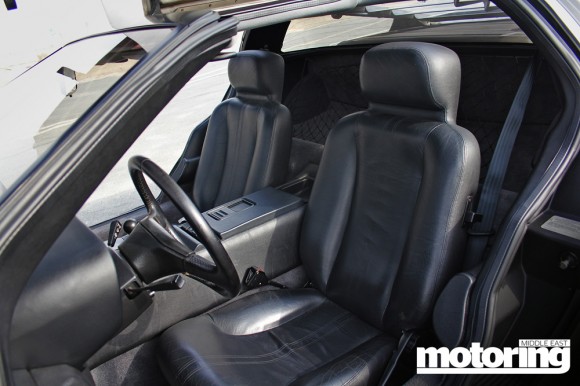
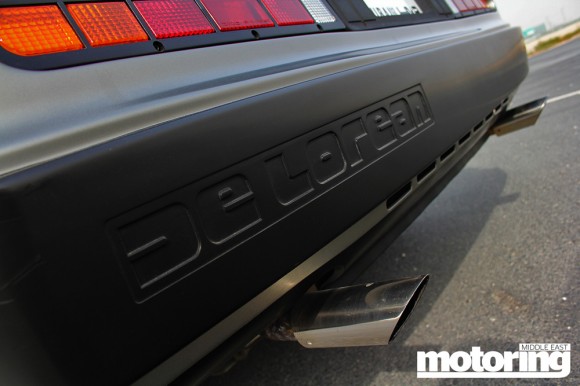
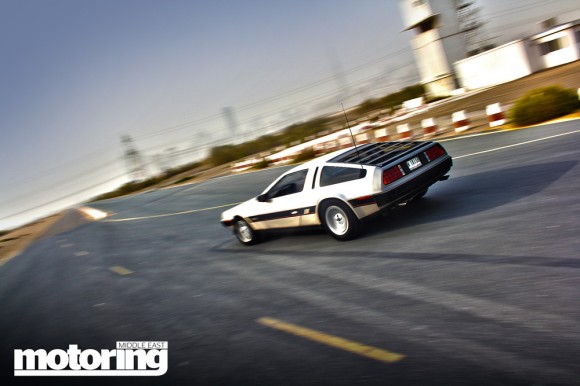
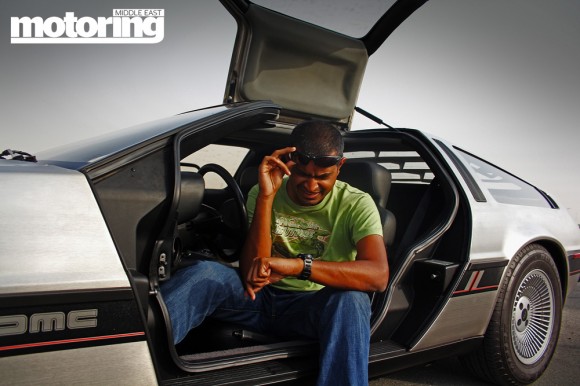





















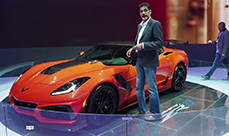

A nicely written article, with just a few inaccuracies common to many stories of this nature.
– The gullwing doors use the gas springs to assist a very high-tech cryogenically treated stainless steel torsion bar (developed by Grumman Aerospace). Problems with people getting “trapped” in cars were limited to very early production cars with ill-fitting latches. The machined blocks of stainless on the doors near the latches corrected this problem very quickly.
– In order to receive the funding from the British government, DeLorean was under a very strict timetable to get the car into production. Though DeLorean had talked with Porsche about developing the car from prototype to production, their timetable was much too long. In hindsight, it’s easy to say the car was not ready for production when it’s more accurate to say the car was not ready for mass production. Engineered by Lotus, who at the time had never produced more than a few hundred cars a year, was asked to production engineer a car that would be built at a rate 400 or so per month.
– The line workers at the factory may have had no production experience, but as the car was merely assembled from supplied components (rather than actually manufacturing pieces), it’s unfair to characterize the workforce as part of the problem. The fact that a greenfield site was turned into what was at the time one of the world’s most advanced assembly plants, a workforce from secretaries to line workers to engineers and executives was hired and trained, and a completely new car developed (it’s not as much like an Esprit as you indicate) and put into production in just 28 months is a feat that has not yet been matched to this day.
– About 50 of the 1982 models were sold through a distributor in the Middle East in early 1982. Two dealers, one in Kuwait City and another in Jeddah sold these cars. Many were purchased by UK and Swedish ex-pats and exported, though a few remain in both countries and sprinkled throughout the Middle East.
– When the deal with the British was done, it was expected the car would retail for about USD18,000. In 1981, with the US (and world) economy teetering, and the value of the dollar dropping against the GBP, the car (which was rightly sourced from mostly UK and European suppliers) cost more to build.
– It’s quite evident from looking at the development of the car – we have a full set of engineering drawings and some of the tooling – along with the factory itself (which I just visited last summer and is now occupied by Montupet and Bombardier) where the British funding went. While many Brits still regard JZD as a carpetbagger, very few and far between are JZD’s detractors in Northern Ireland.
– Maintenance of the stainless is actually quite easy. A stainless cleaner (liquid with pumice to clean deep in the grain) once a year with regular washings and the application of a stainless polish (like on a refrigerator in your home) are all that is necessary. And no worries of paint chips or scratches or body panel rust. Cross-scratches in the grain of the stainless are removed with a scotchbrite pad (never steel wool!) or 80grit sandpaper.
– Marketed as a “Grand Tourer” more than a sports car, for most original buyers, performance was not an issue. Top speed was 125mph or so, so the 80mph remark is inaccurate and unfair. The nearly completed twin turbo development program was planned for a 1984 introduction and was tested to have 0-60 times of just under 6 seconds and a top speed of 165mph – still respectable times today.
– The door window glass was designed to be easily knocked out in the unlikely event – in a car with such a low center of gravity – of a rollover accident. Indeed, the lever effect of the doors allows for them to be opened even upside down, and the factory demonstrated this by placing a car on it’s roof in the day.
– The DeLorean project was actually funded by the Callaghan’s Labour party who, after the project was funded, then lost out to Thatcher and the Conservative party. Thatcher, so as not to fuel the fires already burning in Belfast, tolerated the project but certainly did not support it.
Kudos for a writing such a good story, with excellent photography of a very nice example of the car (hat tip to Tariq!). If you or Tariq ever pass through Houston in your travels, please look us up…
James Espey
Vice President, DeLorean Motor Company
http://www.delorean.com
Regarding the 80mph remark, here’s some clarification on why the DeLorean has an 85mph speedometer:
On September 1, 1979, in a regulation that also regulated speedometer and odometer accuracy, the National Highway Traffic Safety Administration (NHTSA) required speedometers to have special emphasis on the number 55 and a maximum speed of 85 mph (137 km/h). However, on October 22, 1981, NHTSA proposed eliminating speedometer and odometer rules because they were “unlikely to yield significant safety benefits” and “[a] highlighted ’55’ on a speedometer scale adds little to the information provided to the driver by a roadside speed limit sign.”
From Wikipedia article at http://en.wikipedia.org/wiki/National_Maximum_Speed_Law
Nice reply James. I too, was about to point out the common inaccuracies as well as the federal government regulation on the speedometer in Brian’s response. Obviously you were the right person to form a reply! I don’t know how these rumors continuously perpetuate but they are frustrating. It started off as a fair article, but once the erroneous statements started with the weak door struts, I gave up.
And don’t forget Imthishan, the Corvette only had 40 more hp than the DeLorean in 1981. The DMC-12’s power, for that time period, was neither abnormal or inadequate.